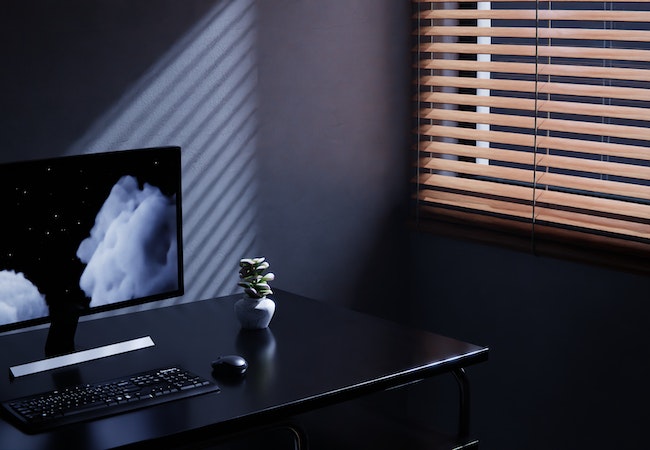9 Fixes for Night Light Not Working on Windows

The Night Light feature in Windows 10 and 11 adjusts the display to show warm colors, especially blocking the harmful blue light. But for many users, Night Light is not working on their PC. The main reasons for the Night Light issue include the inactive location feature, misconfigured Night Light schedule and settings, and corrupt GPU drivers. Try out these methods to fix the Night Light not working error on Windows 10/11.
1. Preliminary Fixes
Before moving on to advanced fixes, restart your PC and check if the Night Light works now. If you use a docking station to connect to an external monitor, remove it and connect your monitor directly. Microsoft mentions that Night Light is also unavailable if you use your system’s DisplayLink or Basic Display drivers.
Some specific series of monitors from Samsung like the Samsung M7 and other brands can have their implementation of Night Light inbuilt. So, Windows Night Light won’t be effective if the same blue-light control eye-saver feature is already active in monitor settings.
2. Check Whether Night Light Is Enabled or Not
Firstly, check whether the Night Light feature is active on your computer on not. Here’s how:
1. Press the Windows key, type Night Light, and press Enter.

2. Check the Show warmer colors on your display to help you sleep option. If the feature is disabled, click on the Turn on now button.

3. Enable Location on Your PC
If you have turned off location settings, Night Light can face difficulty in turning on automatically for your region. Here’s how to enable it:
1. Press the Windows key, type Location, and press Enter.

2. Go to the Location services option. Click on the toggle next to it to enable the location services.

3. Move to the Let apps access your location option and enable the toggle next to it. Make sure that the Settings app is configured to access the device location in the list.

4. Update Date and Time
Incorrect date and time will make Night Light not work as expected, especially if it is set to automatic. So, you must update the system’s date and time:
1. Press the Windows key, type date and time, and press Enter.

2. Scroll down to the Additional settings section. Click on the Sync now button. It will fetch the updated date and time for your region from Windows’s server.

5. Tweak Night Light Schedule
If Night Light doesn’t work after updating both date and time and location services, you can opt for a manual schedule instead. It will ensure that the features automatically switch the display to warm colors when you need it. Repeat the following steps:
1. Press the Windows key, type Night Light, and press Enter.

2. Scroll down to the Schedule night light option. Click on the toggle next to it to enable the schedule.

3. By default, Sunset to sunrise option is selected. If you prefer a custom time, click on the Set hours option. Set the Start and Stop time of your preference.

4. Close the Settings app.
6. Use the Correct Night Light Intensity
If the Night Light intensity is too low on your Windows PC, the display colors won’t feel warm at all. So, you won’t feel the effect even if it is active. Here’s how to do it:
1. Press the Windows key, type Night Light, and press Enter.

2. Go to the Strength option. Click and drag the slider to the light to adjust the Night Light intensity. Move it to 30 percent or more. The screen colors will change while you adjust the slider so you can set the appropriate intensity as per your use case.

7. Wipe Existing Night Light Settings Using Registry Editor
If none of the above tweaks to the Night Light feature doesn’t change, you can reset the Night Light feature using the Registry Editor. Follow the below-mentioned steps:
1. Press the Windows key, type Regedit, and press Enter.

2. Go to the address bar, paste the following path, and press Enter:
Computer\HKEY_CURRENT_USER\Software\Microsoft\Windows\CurrentVersion\CloudStore\Store\DefaultAccount\Cloud\
3. Now, you need to delete the two following subkeys:
$$windows.data.bluelightreduction.bluelightreductionstate$$windows.data.bluelightreduction.settings4. Right-click on the subkey and click on the Delete option.

5. Click on the Yes button.

6. Close the Registry Editor and restart the PC.
8. Fix Issues With Your Display Driver
Outdated GPU drivers can also create a problem with Night Light on Windows. Firstly you should update the GPU drivers to the latest version. If that doesn’t have any effect, you must reinstall the GPU drivers. Here’s how:
1. Press the Windows key, type Device Manager, and press Enter.

2. Scroll down to the Display adapters section and expand it. Right-click on the GPU driver and select the Uninstall device option.

3. Now, click on the Uninstall button.

4. Close the Device Manager and restart your PC.
5. Download the latest GPU drivers from the manufacturer’s website (NVIDIA, AMD, or Intel).
6. Install the driver and check if Night Light works properly on your PC.
9. Update Windows
An outdated version of Windows can contain bugs. If you ignore Windows updates for long, you will be stuck with these bugs which can interfere with system features and other apps. So, you must check and download the latest available update for your Windows PC. Here’s how:
1. Press the Windows key, type Update, and press Enter.

2. Windows will automatically search for the latest update. Click on the Download and install button.
3. Click on the Restart button to apply the latest update on your PC.
Get Night Light Working Again
These were the nine methods you can try when Night Light isn’t working on your Windows PC. Enable the location and tweak the Night Light schedule and intensity. Also, check if you have already enabled any blue light reduction filter in monitor settings. Lastly, reset the Night Light settings and update Windows and the GPU drivers.


